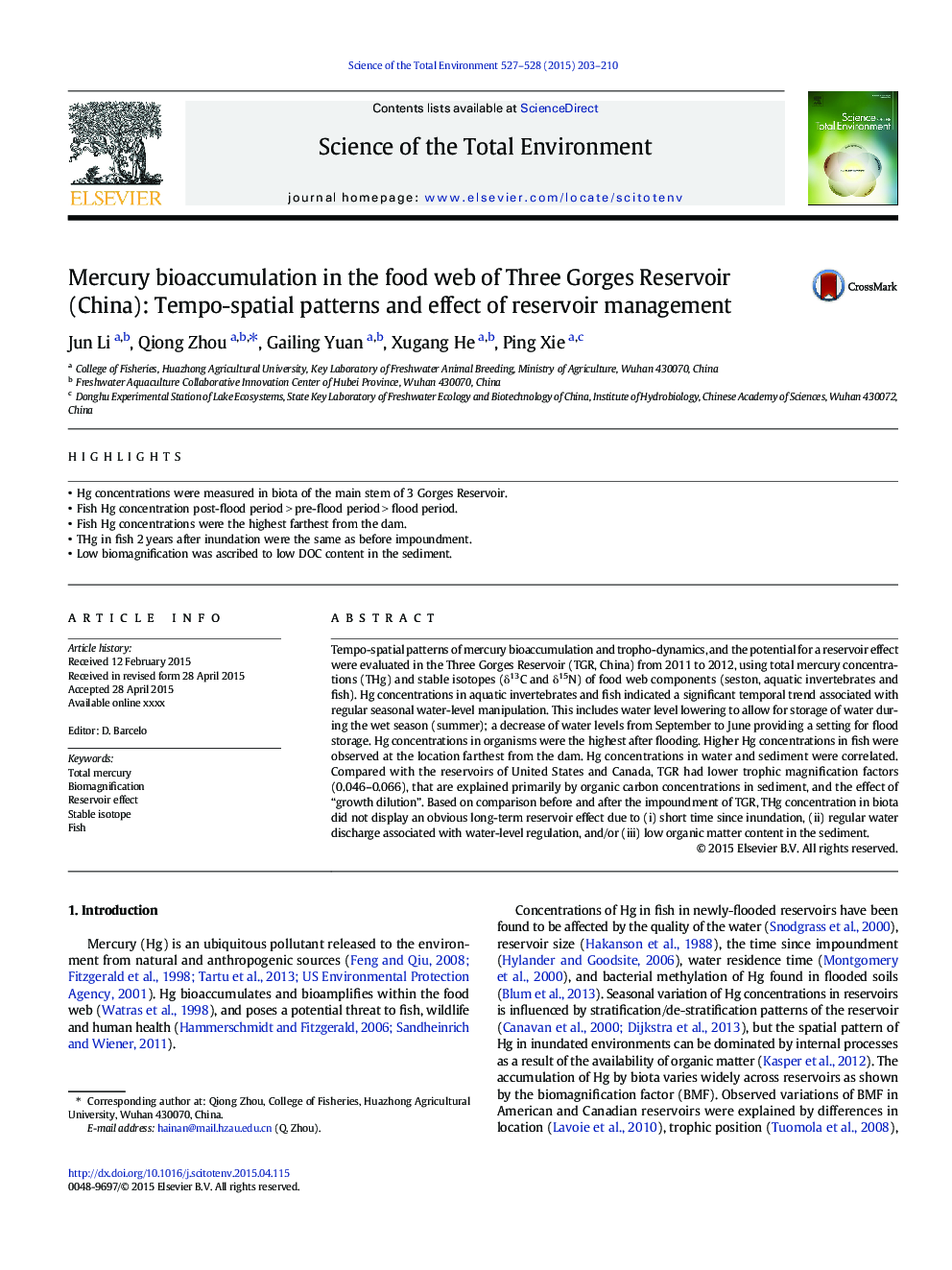| Article ID | Journal | Published Year | Pages | File Type |
|---|---|---|---|---|
| 6326453 | Science of The Total Environment | 2015 | 8 Pages |
Abstract
Tempo-spatial patterns of mercury bioaccumulation and tropho-dynamics, and the potential for a reservoir effect were evaluated in the Three Gorges Reservoir (TGR, China) from 2011 to 2012, using total mercury concentrations (THg) and stable isotopes (δ13C and δ15N) of food web components (seston, aquatic invertebrates and fish). Hg concentrations in aquatic invertebrates and fish indicated a significant temporal trend associated with regular seasonal water-level manipulation. This includes water level lowering to allow for storage of water during the wet season (summer); a decrease of water levels from September to June providing a setting for flood storage. Hg concentrations in organisms were the highest after flooding. Higher Hg concentrations in fish were observed at the location farthest from the dam. Hg concentrations in water and sediment were correlated. Compared with the reservoirs of United States and Canada, TGR had lower trophic magnification factors (0.046-0.066), that are explained primarily by organic carbon concentrations in sediment, and the effect of “growth dilution”. Based on comparison before and after the impoundment of TGR, THg concentration in biota did not display an obvious long-term reservoir effect due to (i) short time since inundation, (ii) regular water discharge associated with water-level regulation, and/or (iii) low organic matter content in the sediment.
Related Topics
Life Sciences
Environmental Science
Environmental Chemistry
Authors
Jun Li, Qiong Zhou, Gailing Yuan, Xugang He, Ping Xie,
